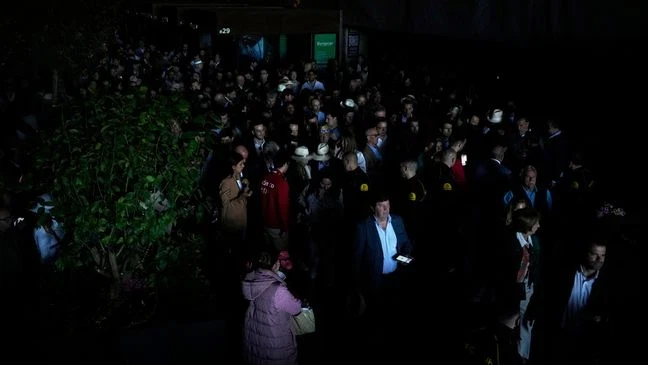When millions of people woke up to darkness across Spain, Portugal, and parts of France on April 28, 2025, chaos was unavoidable. A massive power outage crippled transportation, communication, and essential services, prompting the Spanish government to declare a state of emergency. The scale of the disruption, and the uncertainty about its cause, quickly made headlines worldwide.
In the early hours of the morning, daily life in major cities like Madrid, Lisbon, and Barcelona came to a sudden halt. Subways stopped mid-journey, planes were grounded, traffic lights shut down, and hospitals were forced to operate under emergency conditions. Even phone networks and the internet were rendered useless for hours, cutting off millions from vital information.
The Ministry of the Interior responded swiftly. By midday, officials confirmed that the state of emergency would apply to the most heavily impacted regions, with Madrid, Andalusia, and Extremadura formally requesting national intervention. Over 30,000 police officers were mobilized to maintain order, manage road safety, and assist emergency responders.
What Caused the Massive Blackout?

At this point, the Spanish authorities have not ruled out any possibilities.
Prime Minister Pedro Sanchez stated that investigations were underway, and all potential causes — including technical failures, environmental factors, and cyberattacks — were being considered.
Interestingly, the Portuguese National Cybersecurity Center quickly announced that they found no evidence of a cyberattack affecting Portugal’s infrastructure. This leaves more questions than answers for Spain and its neighbors.
Moreover, emergency meetings were held across Madrid and Barcelona, while Portugal also initiated crisis coordination measures. Despite the chaos, early reports suggested that public panic remained relatively contained, thanks to the rapid governmental response.
Looking Ahead: A Long Recovery?

While electricity has gradually returned to parts of the affected regions, full recovery is expected to be slow. Restoring public trust, analyzing vulnerabilities, and preparing for future risks will likely dominate Spain’s agenda in the coming weeks.
In the next section, we will explore how daily life was disrupted and the firsthand experiences of those caught in this historic event.
Streets in Chaos: Daily Life Disrupted by the Blackout

When the power went out across the Iberian Peninsula, the effects were immediate and severe.
In bustling cities like Madrid and Lisbon, the sudden blackout turned busy streets into dangerous zones. With traffic lights dead, drivers were left to navigate chaotic intersections manually. Unfortunately, this led to a surge in accidents, including a major pileup recorded on social media that highlighted just how perilous the situation had become.
Moreover, public transportation systems came to a standstill. Subway cars ground to a halt between stations, trapping commuters underground for hours. Airports canceled flights indefinitely, leaving passengers stranded and creating long lines of frustrated travelers desperate for answers. Meanwhile, train services throughout Spain and Portugal were suspended, severing crucial connections between major urban centers.
Communication Breakdown: Cut Off from the World
In addition to the transportation paralysis, citizens faced a terrifying communication blackout.
Mobile networks failed, leaving millions unable to call for help or check in on loved ones. Internet services crashed across most major providers, and even public Wi-Fi networks offered no refuge.
Hospitals, arguably the most critical facilities during emergencies, were forced to operate under backup generator power. While most urban hospitals managed to keep vital operations running, some rural clinics were reported to have turned patients away due to power shortages.
In a particularly worrying development, some ATMs and banking systems also went offline, raising concerns over access to cash and basic financial services. Combined with grocery stores unable to process electronic payments, panic buying and food shortages began surfacing in isolated areas.
Firsthand Experiences: Panic, Patience, and Resilience

Despite the overwhelming challenges, reports show that many citizens displayed remarkable resilience and solidarity.
Community groups quickly organized to help the elderly and vulnerable, and improvised traffic control emerged as civilians stepped in to direct cars at major intersections. Moreover, local businesses offered shelter and water to those stuck on the streets.
Eyewitness accounts described the eerie silence that fell over cities usually humming with life.
One resident of Madrid said, “It felt like time froze. No cars, no lights, just the sound of footsteps and distant voices.”
Government Response: Declaring a State of Emergency
Facing mounting chaos, the Spanish government moved swiftly to impose emergency measures.
The Ministry of the Interior officially declared a state of emergency, empowering authorities to take control over public safety, infrastructure, and communications. The regions most impacted — Madrid, Andalusia, and Extremadura — formally requested federal intervention to restore order and maintain essential services.
In response, 30,000 police officers were deployed across critical areas to secure hospitals, transportation hubs, and government buildings. This unprecedented mobilization aimed to prevent looting, safeguard emergency responders, and assist with restoring public order.
Moreover, emergency meetings were convened both nationally and locally.
Cities like Barcelona and Madrid organized crisis committees to coordinate with the central government. Meanwhile, Portugal’s cybersecurity agency quickly investigated the situation, ruling out any evidence of a cyberattack—a major relief given the growing threat of digital warfare across Europe.
Speculation Around the Cause: Still a Mystery
As of now, the cause of the blackout remains undetermined.
Spanish Prime Minister Pedro Sánchez addressed the nation, acknowledging that no theory has been confirmed or ruled out.
Among the possibilities being considered:
- Infrastructure failure due to aging energy grids.
- Extreme weather patterns that may have damaged transmission lines.
- Human error or operational accidents within the power sector.
- A potential, though currently dismissed, cyberattack or sabotage.
Energy experts warn that the sheer scale of the outage suggests a systemic vulnerability rather than a localized issue.
In addition, growing pressure from citizens and businesses is pushing the government to release preliminary findings as soon as possible.
Lessons Learned and Immediate Challenges
This historic blackout exposed critical weaknesses in Spain’s and Portugal’s infrastructure.
Moreover, it highlighted the fragile interconnectedness of the European energy grid, prompting calls for increased investment in renewable energy and grid modernization.
In the upcoming section, we’ll explore how this crisis could reshape Spain’s future energy policies and emergency preparedness strategies.
Maybe you also like:
- Jeff Bezos-Backed Startup Reveals $20K Electric Truck – What You Need to Know
- Woolly Mammoths May Roam Again by 2028
- De-Extinction: Hope or Hubris? The Ethics of Bringing Species Back to Life
- Possible Signs of Life Detected on Exoplanet K2-18b
Follow me on X, YouTube,
Pinterest , Facebook
Threads and Instagram
For more updates visit: flashpointnews.com.br


